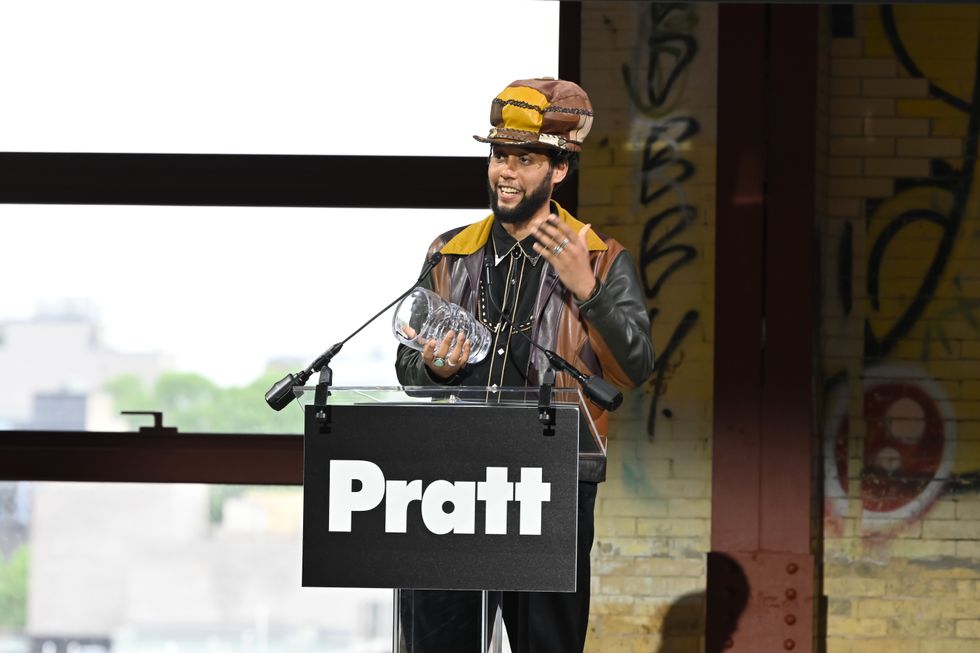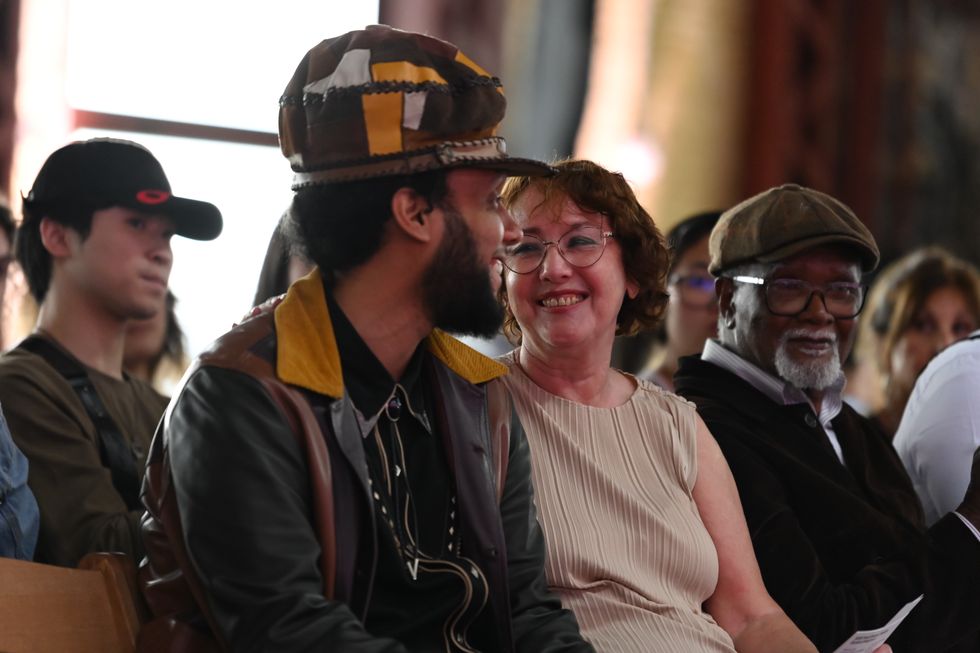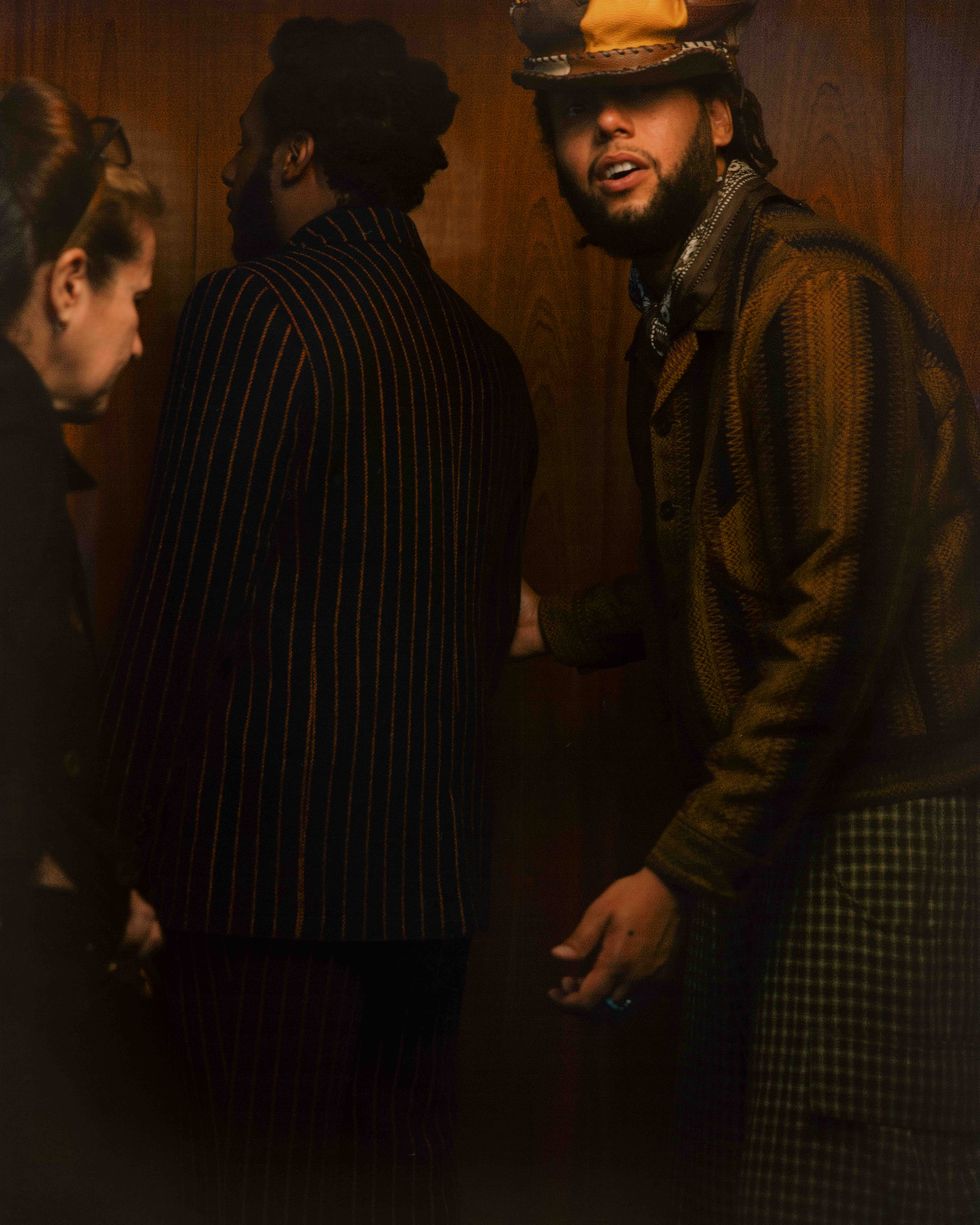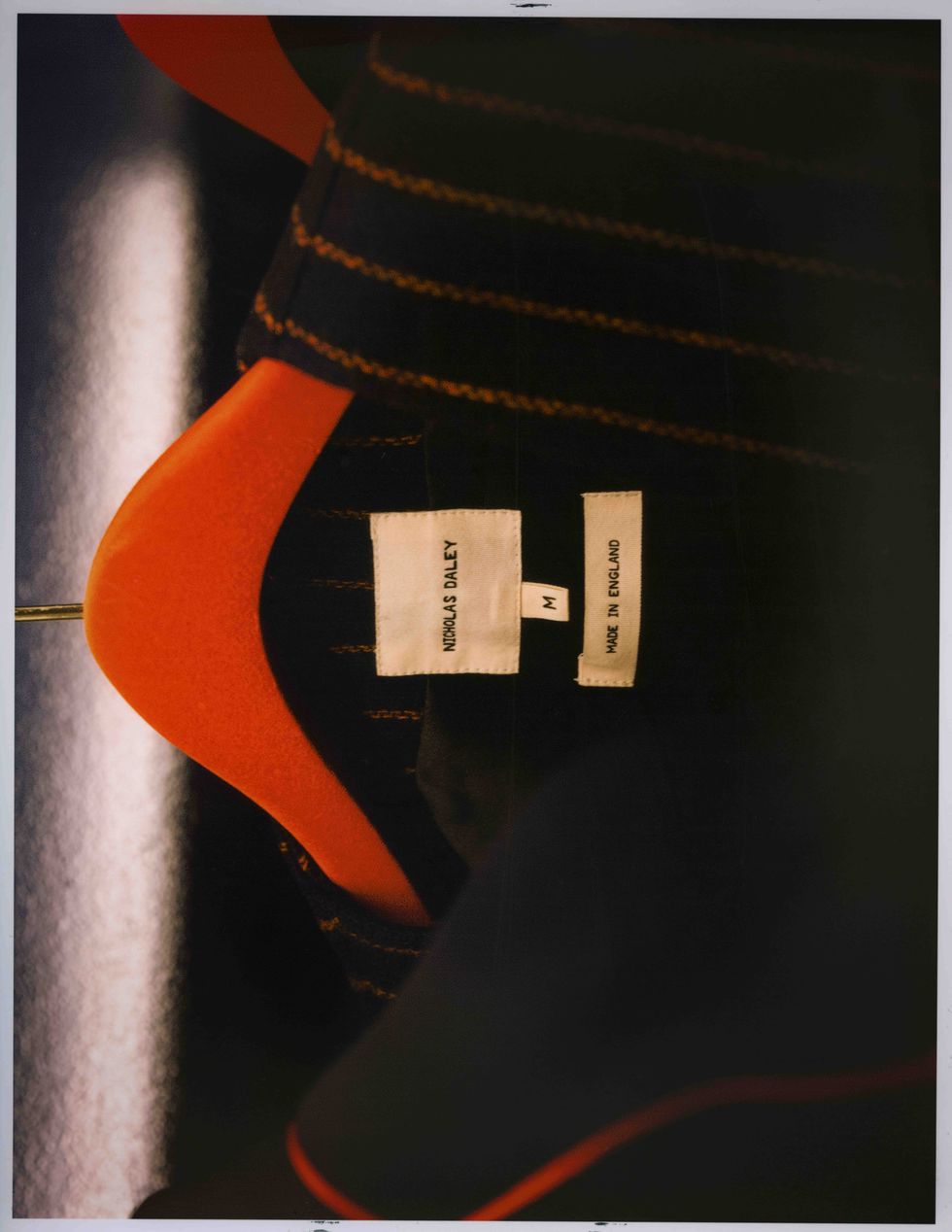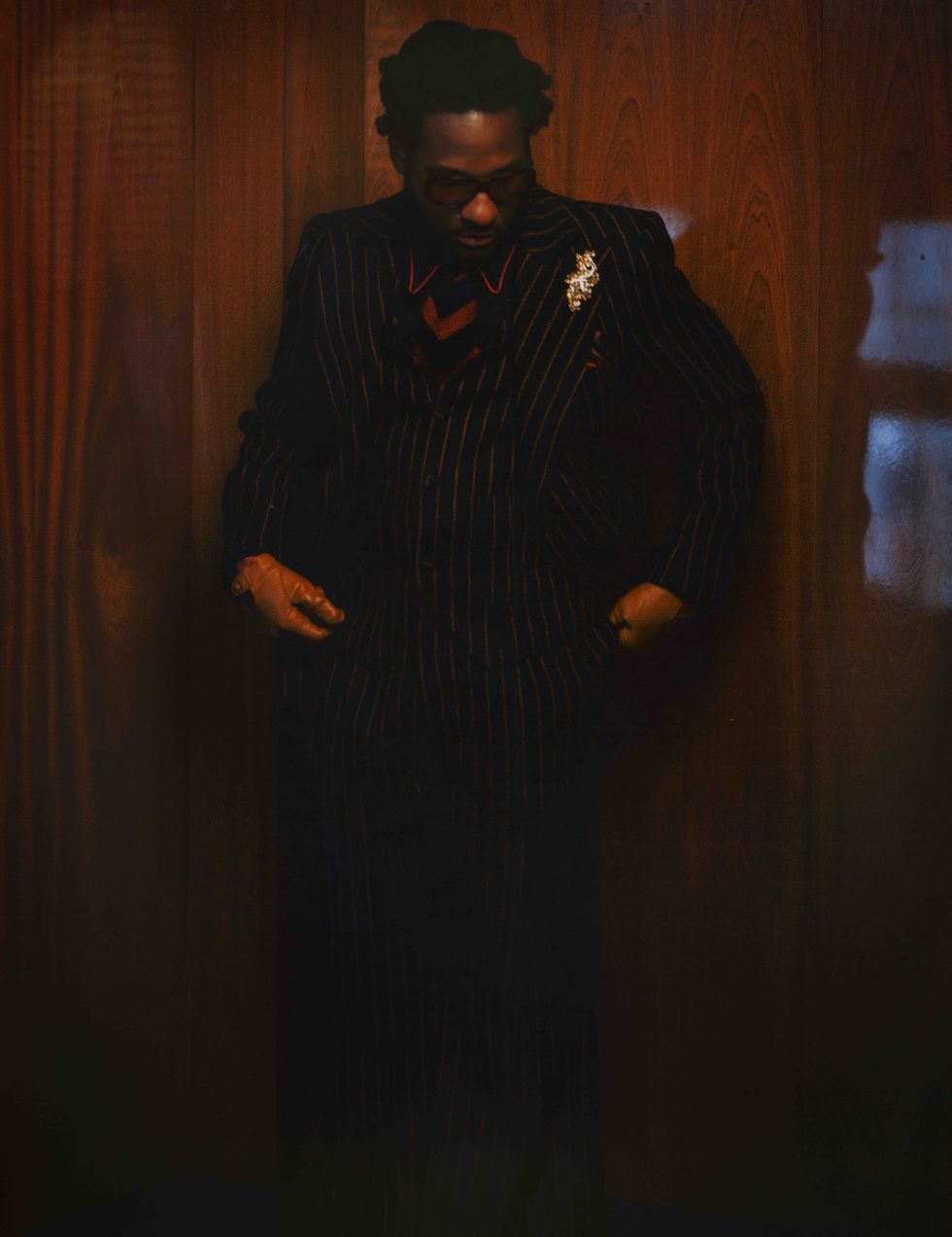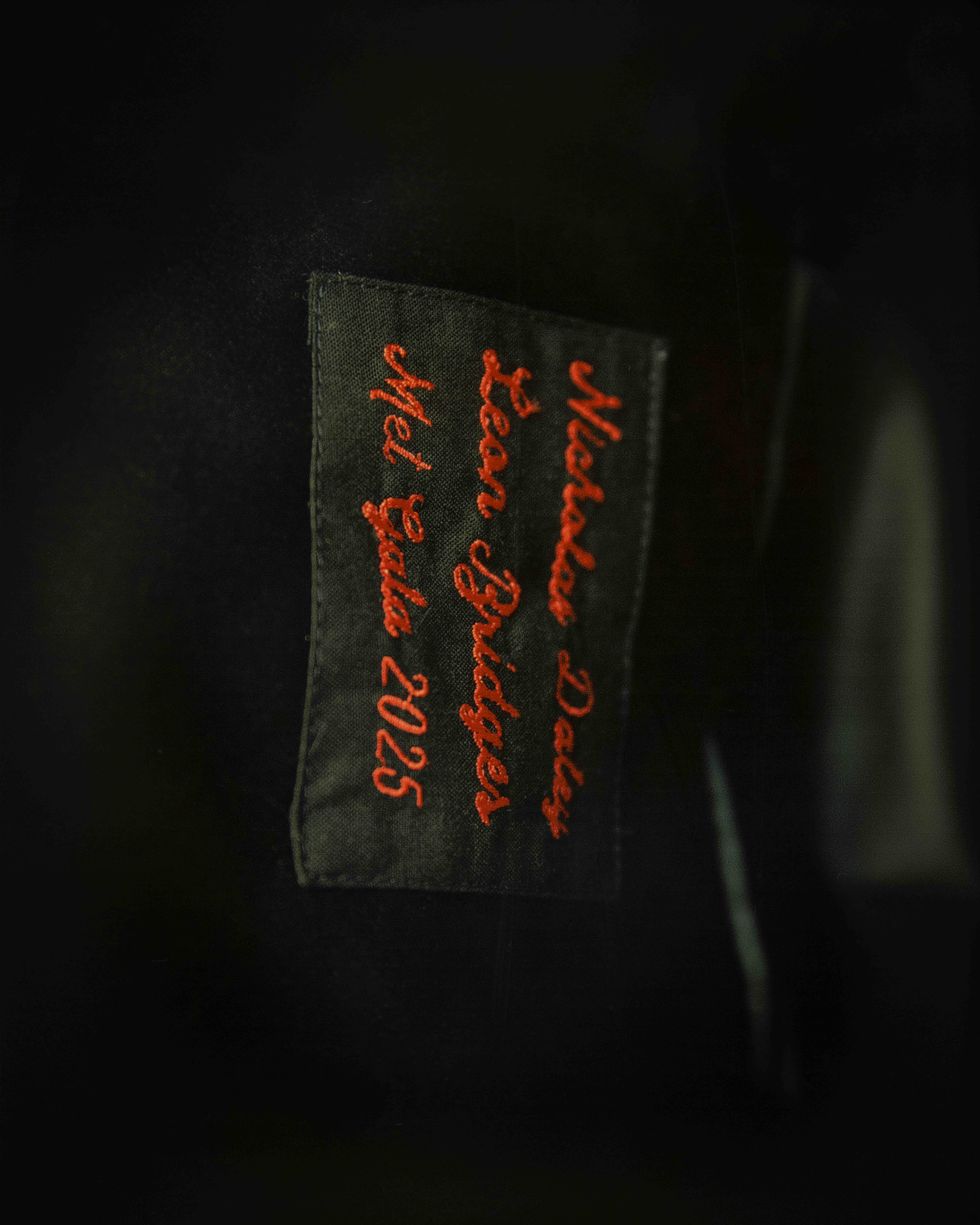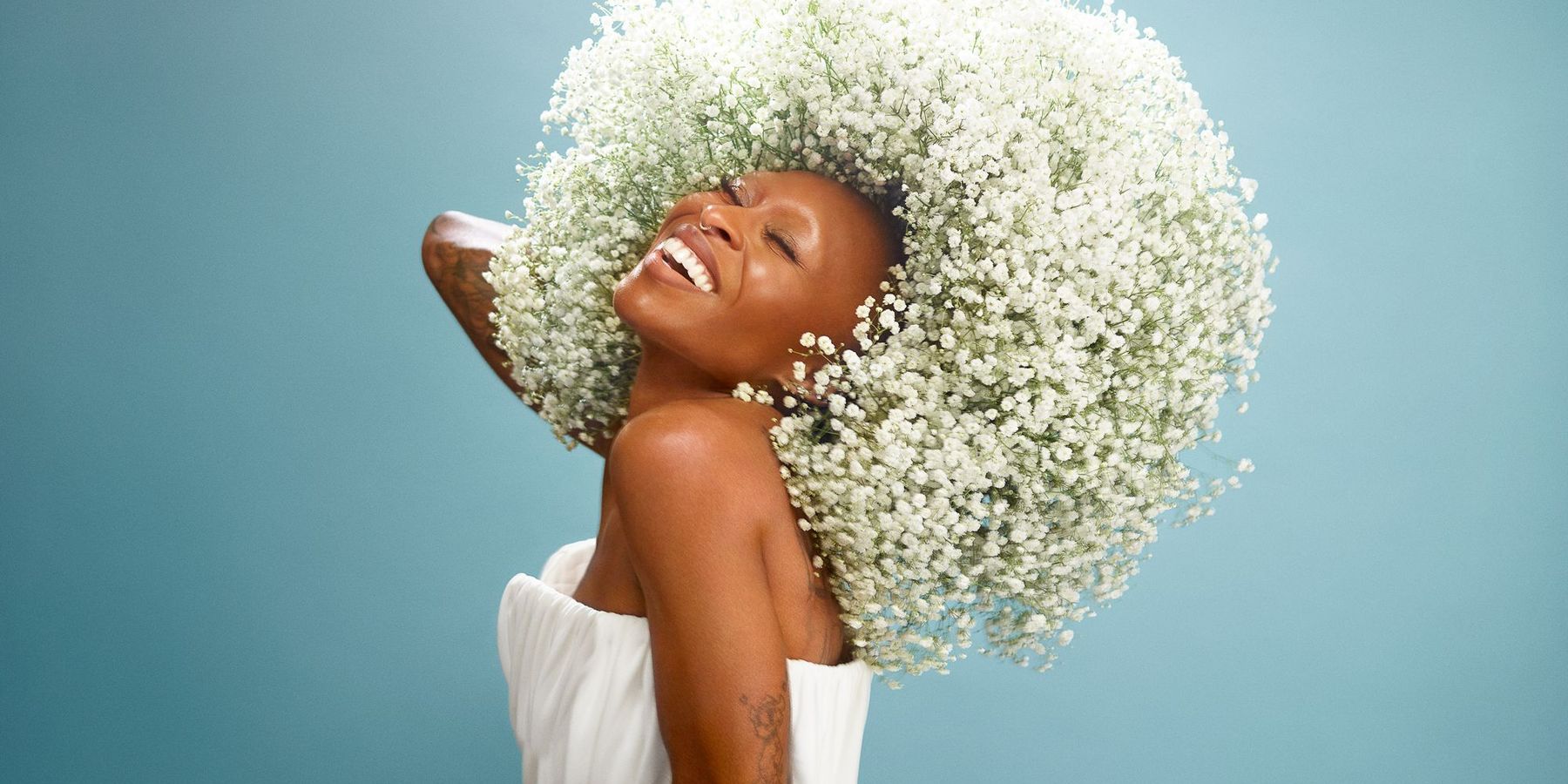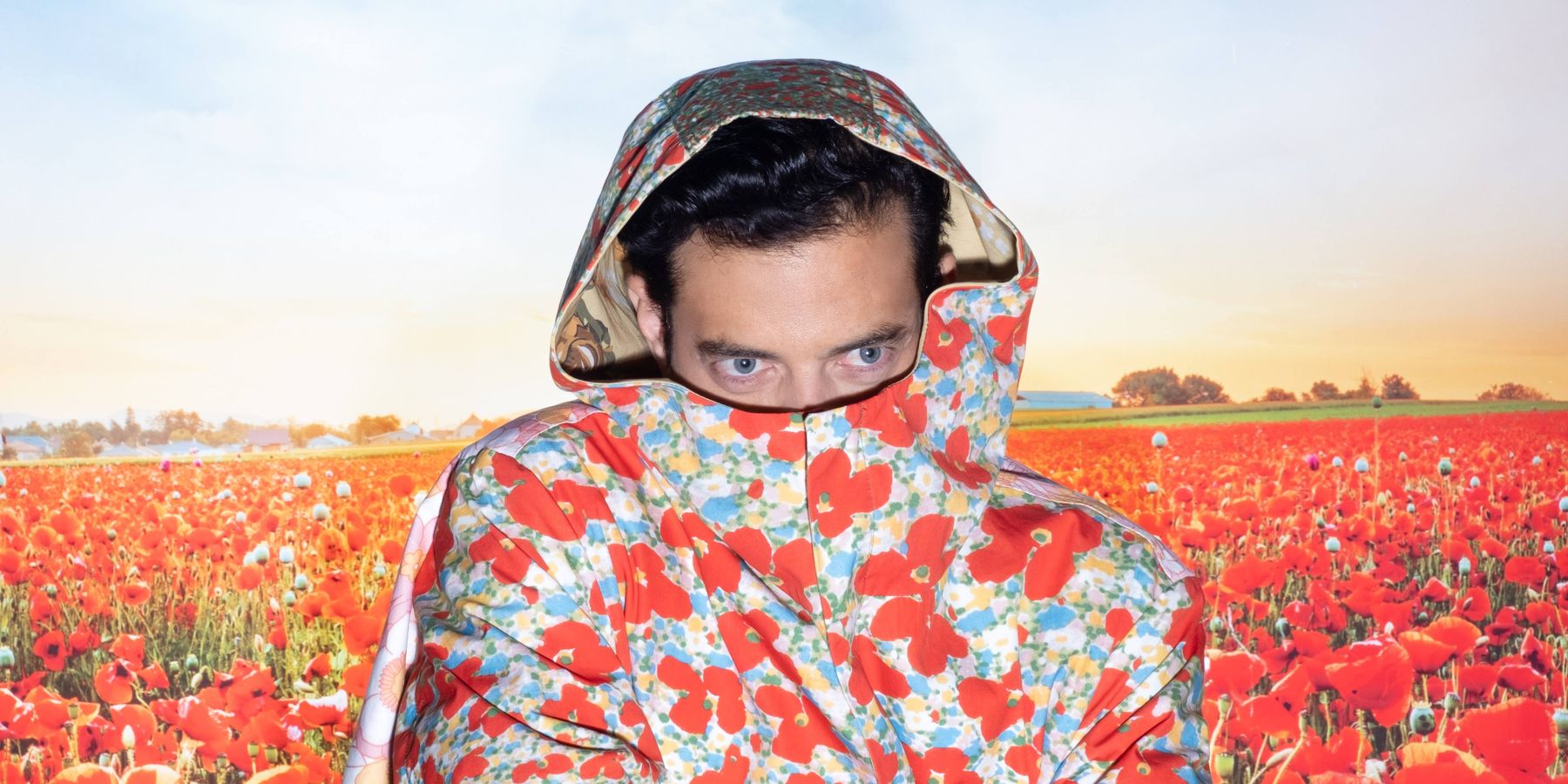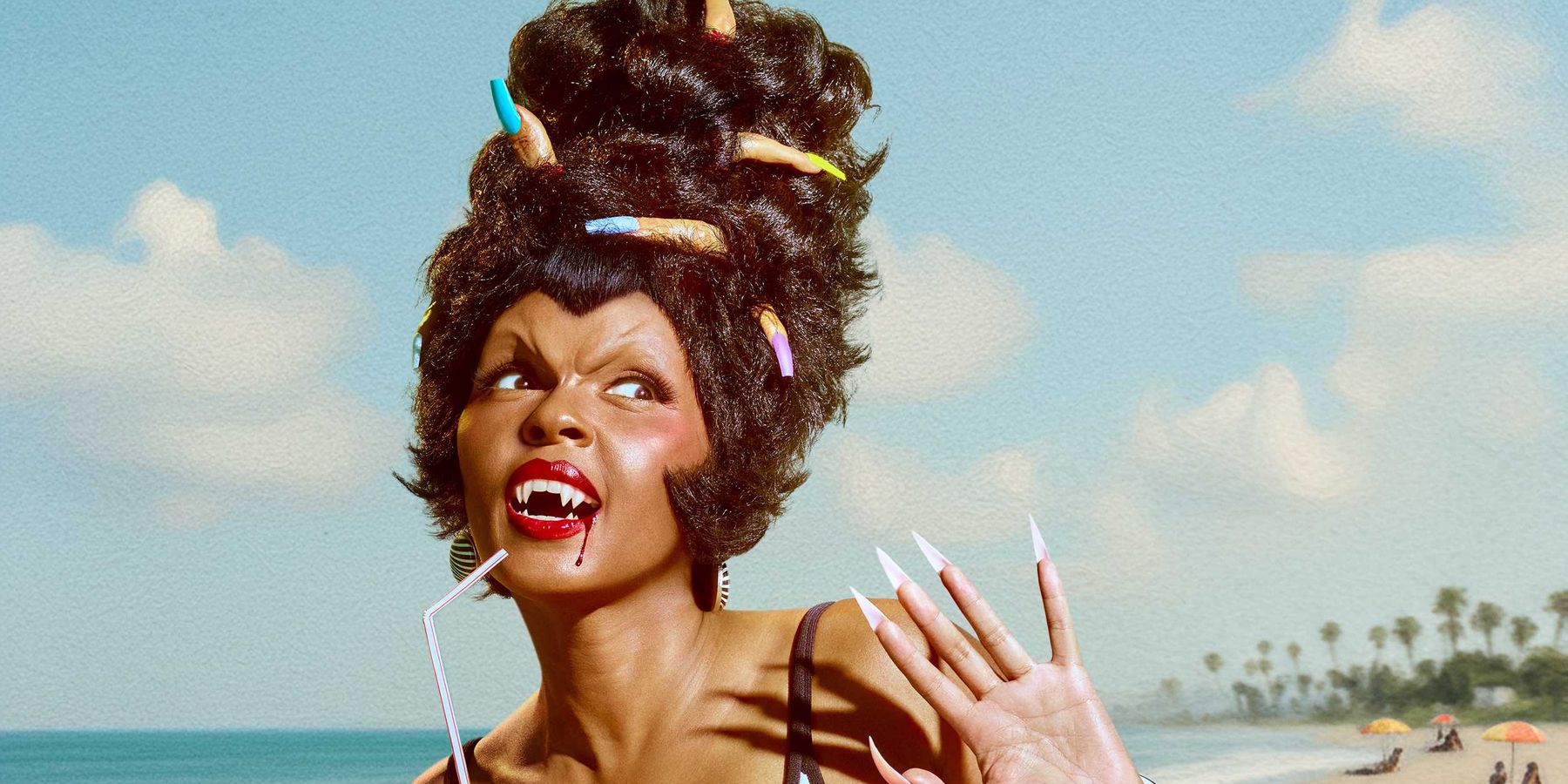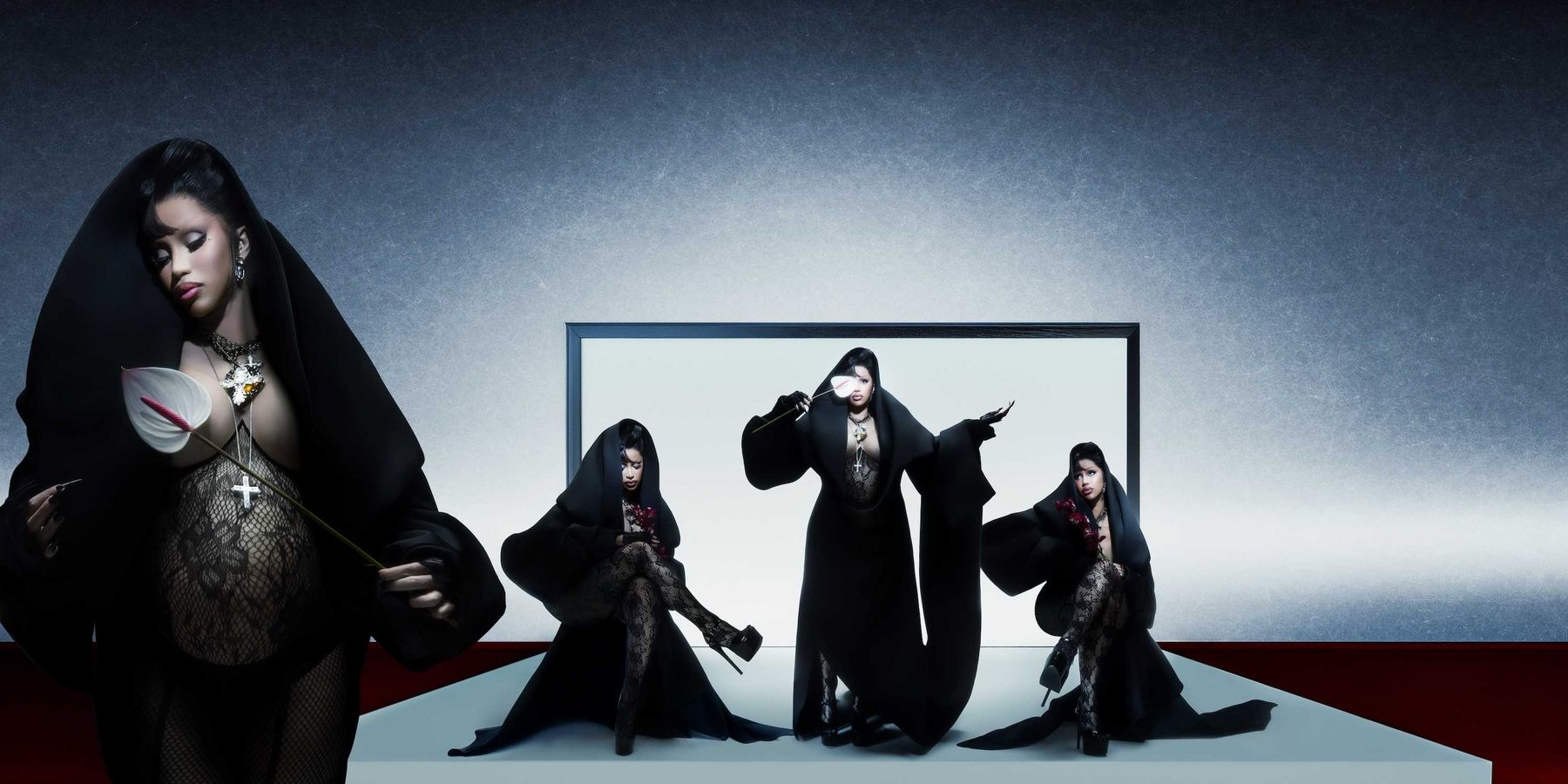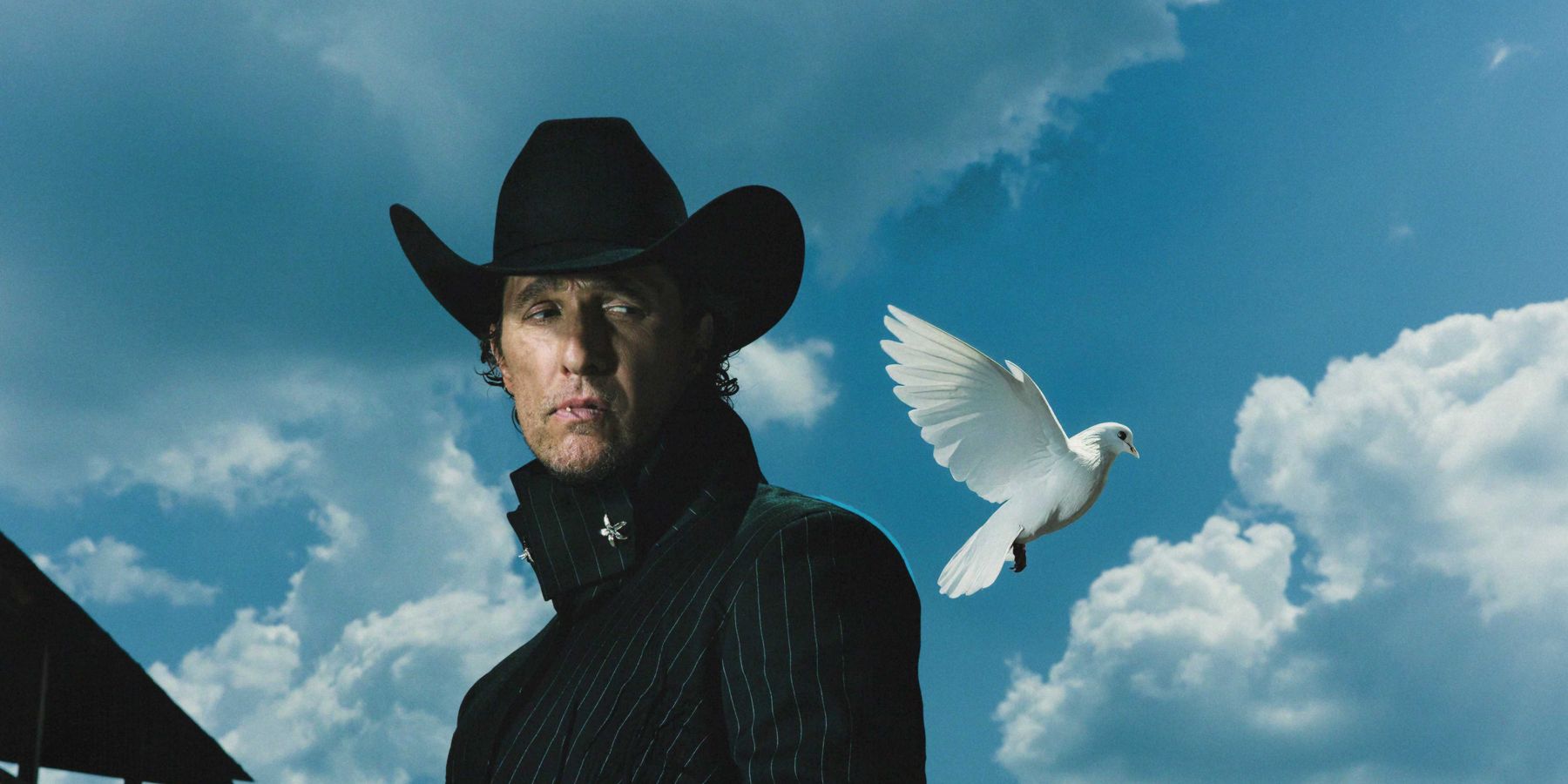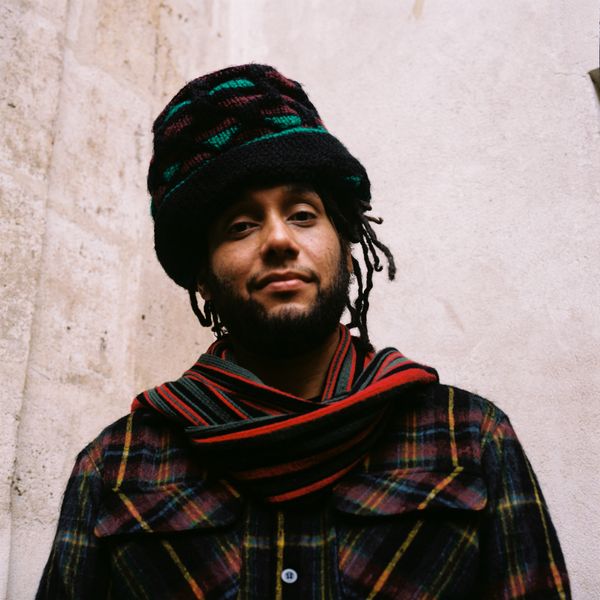
Ten Years In, Nicholas Daley Is Still Designing With Soul
By Ivan Guzman
Jun 04, 2025When Nicholas Daley touches down in New York, he doesn’t just arrive — he resonates. This spring, the London-based menswear designer landed in the city not only to show face, but to show out: a piece in The Met’s Superfine: Tailoring Black Style exhibition, a debut at the Met Gala dressing Leon Bridges in bespoke pinstripe and the honor of receiving the Pratt Fashion Visionary Award, at Powerhouse Arts on May 16th, joining an alumni roll call of designers who’ve shaped the culture
It’s a full-circle moment for a designer who’s spent the last decade crafting a brand rooted in heritage, sound and soul. Since launching his label in 2015, Daley has built a body of work that defies trend cycles and instead tells stories about diaspora, music and identity passed down and stitched forward.
And yet, for all the reverence in his references, Daley’s work never feels like costume. It lives in the club, on the runway and now, at The Met. “The nucleus of what I was doing back then is still very present in what I create now,” he tells PAPER.
Daley’s presence at this year’s Met Gala, where he dressed Leon Bridges in a one-of-one wool ensemble, marked another milestone. “You have to follow briefs, understand your client’s needs, who they are, what they represent,” he says. “Even with the Met Gala noise, you’ve got to stay focused on your craft and your ideas.” It’s a lesson he recently passed on to Pratt’s graduating class during a visit, offering portfolio feedback and career advice in a rare, real-world masterclass.
Daley may be a decade in, but he’s still evolving. “I think it’s really important to talk about legacy and lineage and generational waves,” he says. Whether it’s a '70s t-shirt from his family archive or a stage at Glastonbury, every part of his work is about connecting the past to the now, and making space for what comes next.
Below, he reflects on ten years of the brand, the power of community and what happens when your values become your vision.
The Visionary Awards are happening tonight, right?
Yeah, at Pratt. It’s been a really eventful trip for me, the brand and the team. I’m honored. This is actually my first U.S.-based accolade for my contributions to fashion, so it feels like a major moment. Working closely with an institution like Pratt makes it even more meaningful. I’m really excited.
What does being named the Pratt Fashion Visionary mean to you, especially at this point in your career? Why does this feel significant right now?
Pratt has always stood out to me. It’s been such a key incubator for design, photography and fashion. One of the oldest design schools in North America, and obviously, New York has played a big role in my journey.
This trip has been full of firsts. It’s my first time having a piece exhibited in an American museum (at The Met, no less), and I had my first Met Gala moment earlier this week. Now, receiving this award from Pratt ... it really speaks to the connection I’ve built with the city.
I’ve had support here through stockists like Saks Fifth Avenue, Nordstrom and some incredible independents in Manhattan and Brooklyn. So to be recognized at this stage in my career, especially by a school that’s honored some really incredible designers, I feel deeply humbled.
You met with Pratt’s graduating class earlier this week. What stood out to you about their work? And is there any advice you find yourself giving to young designers over and over again?
It’s always about understanding how competitive the industry is and how complex it can be. I tell students to use their time at school to experiment. That’s the moment to try out different techniques and figure out where you feel most at home creatively.
But I also talk to them about values: understanding your core principles and then learning how to adapt them to an industry context. I gave feedback on portfolios, shared what I look for when hiring designers or production staff and encouraged them to tailor their work toward real-world applications.
At the same time, I reminded them I’m still on my own journey. I’m still doing things I’ve never done before, like the Met Gala, for instance. It was my first time! And it’s the same for them. This will be their first time showing a collection on the Pratt runway, their first time graduating. So long as they’re doing things that challenge them, excite them and push them forward — that’s what matters most.
Congrats on the Met Gala. Everyone’s always curious: Did anything surprise you about the experience, since it was your first time?
A lot of these events come with a certain level of hype, but the Met Gala really is one of the biggest moments on the fashion calendar. This year in particular felt even more historic. Not just in terms of the theme, but in how much money was raised for the Costume Institute. I think it was a record. There was definitely a heightened sense of anticipation.
The theme explored dandyism in the Black community and across the diaspora — something that’s never really been centered on that stage before. It featured incredible contributors like Monica Miller, whose book Slaves to Fashion I actually read during my time at Central Saint Martins. So for me, it was a real full-circle moment — to go from studying her work as a student to now being a part of an exhibition at The Met. I shared that with the Pratt students too: how things you study, the people you meet, even now, can all come back around in meaningful ways.
It was also amazing to see such a strong presence from British brands, particularly Black designers and creatives with Caribbean or African heritage. Being part of that contingent, surrounded by peers from my generation, felt really powerful.
And of course, working with Leon Bridges was incredible. I really admire him as an artist. We share a lot of the same tastes, and we’d already been talking about future collaborations. To dress him for my first Met Gala, and to create something bespoke that resonated with both of us, was a huge honor. It’s something I talked about with the students, too: Once you're out in the world, you have to follow briefs, understand your client’s needs, who they are, what they represent. That’s what I did for the Gala — research, design, development — all under a very tight timeframe. But Leon was happy, and that’s what matters. Even in the chaos of something like the Met, you’ve got to stay focused on your client, your craft and your ideas.
You have a piece at The Met right now. If you could time capsule one item from your archive for 50 years in the future, what would it be?
Probably the Reggae Klub T-shirt, which my parents originally made back in the '70s. The artwork, the ideology, the history, it’s all there. That original tee has been in museums and has been such a core part of my life and practice. It’s become an iconic symbol of the brand, and I think it really encapsulates the generational, cultural and creative lineage I’m always thinking about.
We reproduce the shirt each season, and it’s very much a staple for us. There’s something powerful about preserving that kind of legacy — a piece that speaks to my roots and continues to inspire new work. That’s what I’d want to keep alive for future generations.
So it's been 10 years with your brand now. You started in 2015, right?
Yeah, 2015. Maybe 2016, officially. But yeah, it’s been about a decade of making clothes with my name on them.
Wild that 2015 was a decade ago.
Literally. I’m like, what the fuck? Sorry for swearing. But yeah, time just goes. That’s another thing I told the students: Time moves fast, so you’ve got to grab opportunities and make the most of everything you're working on.
How do you think your vision for the brand has changed in those 10 years? And how has it stayed the same?
A lot has stayed the same. The core values I started with — the emphasis on community, on storytelling — they’ve always been there. My graduate show was cast entirely with friends. I chose muses who are still part of my world. And I’ve always tried to support British manufacturing and develop bespoke textiles — jacquards, prints, plaids.
The nucleus of what I was doing back then is still very present in what I create now. I told the Pratt students I see my collections like siblings — each one connected, but evolving, exploring different ideas and directions. It’s definitely been a journey. I’m proud of what’s happened so far, and excited to see what’s next. More collaborations, more projects, more to come.
What’s next for Nicholas Daley, the brand and the person?
We’ve got some exciting collaborations dropping this year. We’re working with Clarks Originals (they’re celebrating 200 years) and also with Flower Mountain, a Japanese footwear brand doing more technical shoes. We did something recently with Lyle & Scott as well, who are celebrating 150 years. I really enjoy working with British heritage brands that have deep histories.
Beyond that, we’ve got some music projects in the works, festivals like GALA in South London, and we’re also doing a reggae stage at Glastonbury. So music, culture and community are still a huge part of the brand’s DNA.
Then, of course, there’s Fashion Week. We’re preparing our next collection for Paris. The rest of the year is shaping up to be full-on, but in the best way: collaborations, events, new product development. I’m just looking to keep building on this momentum from The Met, the Gala, the Visionary Award from Pratt, and keep making work that tells the story of the brand in new ways.

Photos courtesy of Nicholas Daley
Related Articles Around the Web
MORE ON PAPER
Entertainment
Cynthia Erivo in Full Bloom
Photography by David LaChapelle / Story by Joan Summers / Styling by Jason Bolden / Makeup by Joanna Simkim / Nails by Shea Osei
Photography by David LaChapelle / Story by Joan Summers / Styling by Jason Bolden / Makeup by Joanna Simkim / Nails by Shea Osei
01 December
Entertainment
Rami Malek Is Certifiably Unserious
Story by Joan Summers / Photography by Adam Powell
Story by Joan Summers / Photography by Adam Powell
14 November
Music
Janelle Monáe, HalloQueen
Story by Ivan Guzman / Photography by Pol Kurucz/ Styling by Alexandra Mandelkorn/ Hair by Nikki Nelms/ Makeup by Sasha Glasser/ Nails by Juan Alvear/ Set design by Krystall Schott
Story by Ivan Guzman / Photography by Pol Kurucz/ Styling by Alexandra Mandelkorn/ Hair by Nikki Nelms/ Makeup by Sasha Glasser/ Nails by Juan Alvear/ Set design by Krystall Schott
27 October
Music
You Don’t Move Cardi B
Story by Erica Campbell / Photography by Jora Frantzis / Styling by Kollin Carter/ Hair by Tokyo Stylez/ Makeup by Erika LaPearl/ Nails by Coca Nguyen/ Set design by Allegra Peyton
Story by Erica Campbell / Photography by Jora Frantzis / Styling by Kollin Carter/ Hair by Tokyo Stylez/ Makeup by Erika LaPearl/ Nails by Coca Nguyen/ Set design by Allegra Peyton
14 October
Entertainment
Matthew McConaughey Found His Rhythm
Story by Joan Summers / Photography by Greg Swales / Styling by Angelina Cantu / Grooming by Kara Yoshimoto Bua
Story by Joan Summers / Photography by Greg Swales / Styling by Angelina Cantu / Grooming by Kara Yoshimoto Bua
30 September
